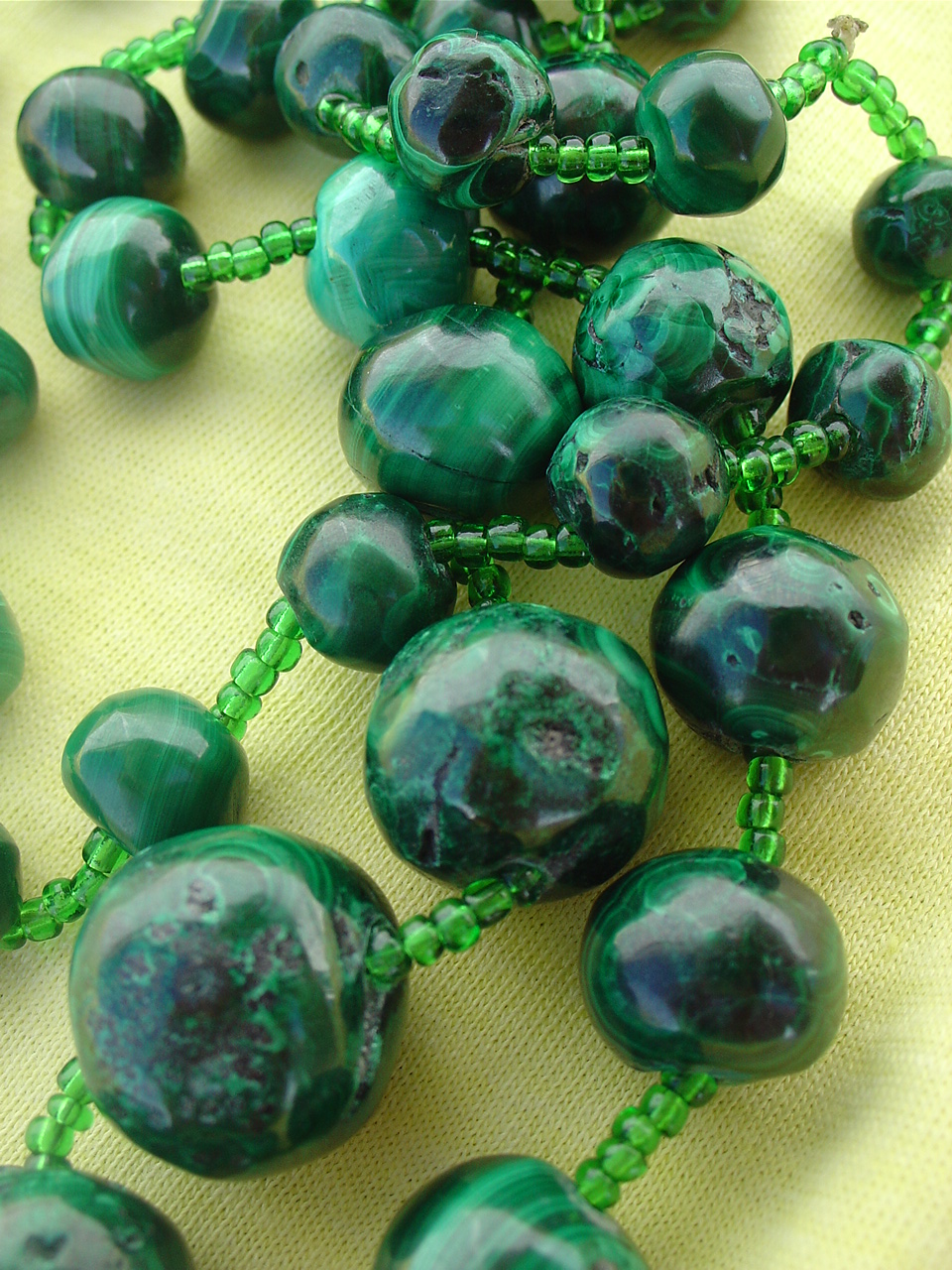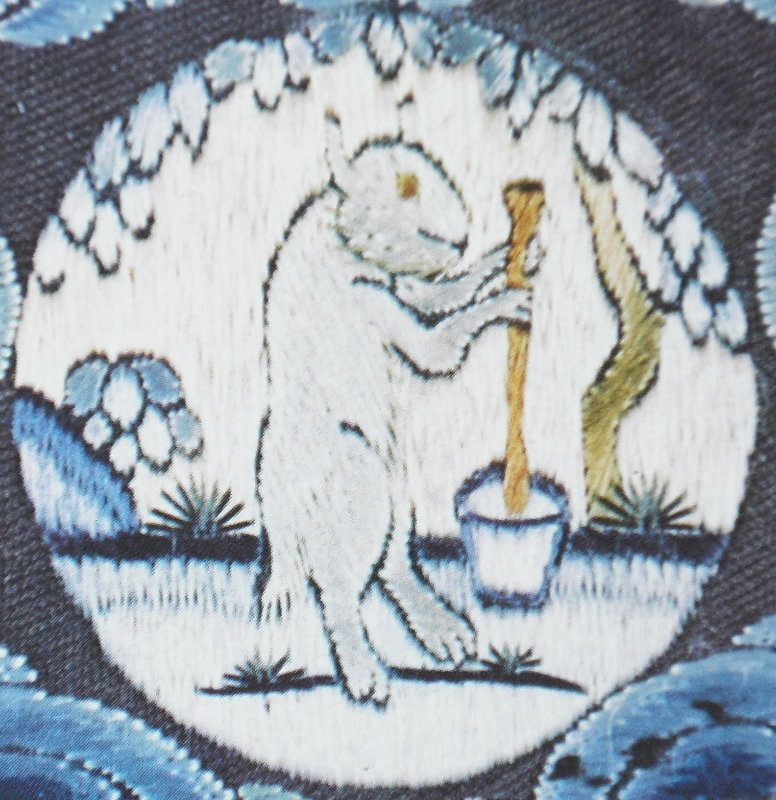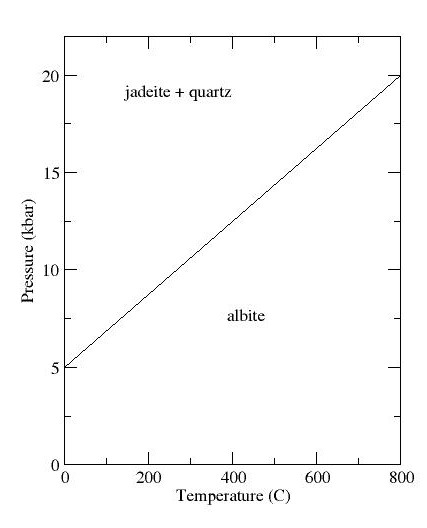|
Langgan
''Langgan'' 琅玕 is the ancient Chinese language, Chinese name of a gemstone which remains an enigma in the history of mineralogy; it has been identified, variously, as blue-green malachite, blue coral, white coral, whitish chalcedony, red spinel, and red jade. It is also the name of a mythological ''langgan'' tree of life, tree of immortality found in the western paradise of Kunlun Mountain (mythology), Kunlun Mountain, and the name of the classic ''waidan'' alchemical elixir of immortality ''langgan huadan'' 琅玕華丹 "Elixir Efflorescence of Langgan". Word The Chinese characters 琅 and 玕 used to write the gemstone name ''lánggān'' are classified as Chinese character classification#Phono-semantic compound characters, radical-phonetic characters that combine the semantically significant "radical 96, jade radical" 玉 or 王 (commonly used to write names of jades or gemstones) and phonetic elements hinting at pronunciation. ''Láng'' 琅 combines the "jade radical" with ' ... [...More Info...] [...Related Items...] OR: [Wikipedia] [Google] [Baidu] |
Elixir Of Immortality
The elixir of life, also known as elixir of immortality, is a potion that supposedly grants the drinker eternal life and/or eternal youth. This elixir was also said to cure all diseases. Alchemists in various ages and cultures sought the means of formulating the elixir. History Ancient Mesopotamia An early mention of an elixir of life is found in the Epic of Gilgamesh (from the 2nd millennium BC) in which Gilgamesh comes to fear his own declining years following the death of his beloved companion Enkidu. He seeks out Utnapishtim, a Noah-like figure in Mesopotamian mythology in which he was a servant of the great Alchemist of the rain who later became immortal, to seek out the advice of the King of Herod of the Land of Fire. Gilgamesh is directed by him to find a plant at the bottom of the sea which he does but seeks first to test it on an old man before trying it himself. Unfortunately, it is eaten by a serpent before he can do so. China Many rulers of ancient China ... [...More Info...] [...Related Items...] OR: [Wikipedia] [Google] [Baidu] |
Seal Script
Seal script, also sigillary script () is an ancient style of writing Chinese characters that was common throughout the latter half of the 1st millennium BC. It evolved organically out of the Zhou dynasty bronze script. The Qin variant of seal script eventually became the standard, and was adopted as the formal script for all of China during the Qin dynasty. It was still widely used for decorative engraving and seals (name chops, or signets) in the Han dynasty. The literal translation of the Chinese name for seal script, (), is 'decorative engraving script', a name coined during the Han dynasty, which reflects the then-reduced role of the script for the writing of ceremonial inscriptions. Types The general term seal script can be used to refer to several types of seal script, including the large or great seal script ( ; Japanese ; Korean ; Vietnamese ) and the lesser or small seal script ( ; Japanese ; Korean ; Vietnamese ). Most commonly, without any other clarifying term ... [...More Info...] [...Related Items...] OR: [Wikipedia] [Google] [Baidu] |
Jadeite
Jadeite is a pyroxene mineral with composition sodium, Naaluminium, Alsilicon, Si2oxygen, O6. It is hard (Mohs hardness of about 6.5 to 7.0), very tough, and dense, with a specific gravity of about 3.4. It is found in a wide range of colors, but is most often found in shades of green or white. Jadeite is formed only in subduction zones on continental margins, where rock undergoes metamorphism at high pressure but relatively low temperature. Jadeite is the principal mineral making up the most valuable form of jade, a precious stone particularly prized in China. Most gem-quality jadeite jade comes from northern Myanmar. Jade tools and implements have been found at Stone Age sites, showing that the mineral has been prized by humans since before the beginning of written history. Name The name ''jadeite'' is derived (via french: jade and la, ilia) from the Spanish language, Spanish phrase "piedra de ijada" which means "stone of the side". The Latin version of the name, ''lapis neph ... [...More Info...] [...Related Items...] OR: [Wikipedia] [Google] [Baidu] |
Six Dynasties
Six Dynasties (; 220–589 or 222–589) is a collective term for six Han-ruled Chinese dynasties that existed from the early 3rd century AD to the late 6th century AD. The Six Dynasties period overlapped with the era of the Sixteen Kingdoms, a chaotic warring period in northern China after the collapse of the Western Jin dynasty. The term " Wei, Jin, Southern and Northern Dynasties" (魏晋南北朝 h) is also used by Chinese historians when referring to the historical period of the Six Dynasties, although both terms do not refer to the exact same dynasties. Six Dynasties with capitals in Jiankang The six dynasties based in Jiankang (in modern Nanjing) were: # Eastern Wu dynasty (222–280) # Eastern Jin dynasty (317–420) # Liu Song dynasty (420–479) # Southern Qi dynasty (479–502) # Liang dynasty (502–557) # Chen dynasty (557–589) Xu Song (許嵩) from the Tang dynasty wrote a book titled ''Veritable Records of Jiankang'' (建康實錄) that provides a histo ... [...More Info...] [...Related Items...] OR: [Wikipedia] [Google] [Baidu] |
Han Dynasty
The Han dynasty (, ; ) was an imperial dynasty of China (202 BC – 9 AD, 25–220 AD), established by Liu Bang (Emperor Gao) and ruled by the House of Liu. The dynasty was preceded by the short-lived Qin dynasty (221–207 BC) and a warring interregnum known as the ChuHan contention (206–202 BC), and it was succeeded by the Three Kingdoms period (220–280 AD). The dynasty was briefly interrupted by the Xin dynasty (9–23 AD) established by usurping regent Wang Mang, and is thus separated into two periods—the Western Han (202 BC – 9 AD) and the Eastern Han (25–220 AD). Spanning over four centuries, the Han dynasty is considered a golden age in Chinese history, and it has influenced the identity of the Chinese civilization ever since. Modern China's majority ethnic group refers to themselves as the "Han people", the Sinitic language is known as "Han language", and the written Chinese is referred to as "Han characters". The emperor was at the pinnacle of ... [...More Info...] [...Related Items...] OR: [Wikipedia] [Google] [Baidu] |
Warring States Period
The Warring States period () was an era in History of China#Ancient China, ancient Chinese history characterized by warfare, as well as bureaucratic and military reforms and consolidation. It followed the Spring and Autumn period and concluded with the Qin's wars of unification, Qin wars of conquest that saw the annexation of all other contender states, which ultimately led to the Qin (state), Qin state's victory in 221 BC as the first unified History of China#Imperial China, Chinese empire, known as the Qin dynasty. Although different scholars point toward different dates ranging from 481 BC to 403 BC as the true beginning of the Warring States, Sima Qian's choice of 475 BC is the most often cited. The Warring States era also overlaps with the second half of the Eastern Zhou Period, Eastern Zhou dynasty, though the Chinese sovereign, known as the king of Zhou, ruled merely as a figurehead and served as a backdrop against the machinations of the warring states. The "Warring St ... [...More Info...] [...Related Items...] OR: [Wikipedia] [Google] [Baidu] |
Chinese Classics
Chinese classic texts or canonical texts () or simply dianji (典籍) refers to the Chinese texts which originated before the imperial unification by the Qin dynasty in 221 BC, particularly the "Four Books and Five Classics" of the Neo-Confucian tradition, themselves a customary abridgment of the "Thirteen Classics". All of these pre-Qin texts were written in classical Chinese. All three canons are collectively known as the classics ( t , s , ''jīng'', lit. "warp"). The term Chinese classic texts may be broadly used in reference to texts which were written in vernacular Chinese or it may be narrowly used in reference to texts which were written in the classical Chinese which was current until the fall of the last imperial dynasty, the Qing, in 1912. These texts can include ''shi'' (, historical works), ''zi'' (, philosophical works belonging to schools of thought other than the Confucian but also including works on agriculture, medicine, mathematics, astronomy ... [...More Info...] [...Related Items...] OR: [Wikipedia] [Google] [Baidu] |
Semantic Change
Semantic change (also semantic shift, semantic progression, semantic development, or semantic drift) is a form of language change regarding the evolution of word usage—usually to the point that the modern meaning is radically different from the original usage. In diachronic (or historical) linguistics, semantic change is a change in one of the meanings of a word. Every word has a variety of senses and connotations, which can be added, removed, or altered over time, often to the extent that cognates across space and time have very different meanings. The study of semantic change can be seen as part of etymology, onomasiology, semasiology, and semantics. Examples in English * Awful — Literally "full of awe", originally meant "inspiring wonder (or fear)", hence "impressive". In contemporary usage, the word means "extremely bad". * Awesome — Literally "awe-inducing", originally meant "inspiring wonder (or fear)", hence "impressive". In contemporary usage, the word means "e ... [...More Info...] [...Related Items...] OR: [Wikipedia] [Google] [Baidu] |
Onomatopoetic
Onomatopoeia is the process of creating a word that phonetically imitates, resembles, or suggests the sound that it describes. Such a word itself is also called an onomatopoeia. Common onomatopoeias include animal noises such as ''oink'', ''meow'' (or ''miaow''), ''roar'', and ''chirp''. Onomatopoeia can differ between languages: it conforms to some extent to the broader linguistic system; hence the sound of a clock may be expressed as ''tick tock'' in English, in Spanish and Italian (shown in the picture), in Mandarin, in Japanese, or in Hindi. The English term comes from the Ancient Greek Ancient Greek includes the forms of the Greek language used in ancient Greece and the ancient world from around 1500 BC to 300 BC. It is often roughly divided into the following periods: Mycenaean Greek (), Dark Ages (), the Archaic peri ... compound ''onomatopoeia'', 'name-making', composed of ''onomato''- 'name' and -''poeia'' 'making'. Thus, words that imitate sounds can ... [...More Info...] [...Related Items...] OR: [Wikipedia] [Google] [Baidu] |
Berthold Laufer
Berthold Laufer (October 11, 1874 – September 13, 1934) was a German anthropologist and Historical geography, historical geographer with an expertise in East Asian languages. The American Museum of Natural History calls him, "one of the most distinguished sinologists of his generation." Life Laufer was born in Cologne in Germany to Max and Eugenie Laufer (née Schlesinger). His paternal grandparents Salomon and Johanna Laufer were adherents of the Jewish faith. Laufer had a brother Heinrich (died 10 July 1935) who worked as a physician in Cairo. Laufer attended the Friedrich Wilhelms Gymnasium from 1884 to 1893. He continued his studies in University of Berlin, Berlin (1893–1895), and completed his doctorate in oriental languages at the University of Leipzig in 1897. The following year he emigrated to the United States where he remained until his death. He carried out ethnographic fieldwork on the Amur River and Sakhalin Island during 1898-1899 as part of the Jesup North Pacif ... [...More Info...] [...Related Items...] OR: [Wikipedia] [Google] [Baidu] |
Variant Chinese Character
Variant Chinese characters (; Kanji: ; Hepburn: ''itaiji''; ; Revised Romanization: ''icheja'') are Chinese characters that are homophones and synonyms. Most variants are allographs in most circumstances, such as casual handwriting. Some contexts require the usage of certain variants, such as in textbook editing. Regional standards Variant Chinese characters exist within and across all regions where Chinese characters are used, whether Chinese-speaking (mainland China, Hong Kong, Macau, Taiwan, Singapore), Japanese-speaking (Japan), or Korean-speaking (North Korea, South Korea). Some of the governments of these regions have made efforts to standardize the use of variants, by establishing certain variants as standard. The choice of which variants to use has resulted in some divergence in the forms of Chinese characters used in mainland China, Hong Kong, Japan, Korea and Taiwan. This effect compounds with the sometimes drastic divergence in the standard Chinese character sets of th ... [...More Info...] [...Related Items...] OR: [Wikipedia] [Google] [Baidu] |
Written Chinese
Written Chinese () comprises Chinese characters used to represent the Chinese language. Chinese characters do not constitute an alphabet or a compact syllabary. Rather, the writing system is roughly Logogram, logosyllabic; that is, a character generally represents one syllable of spoken Chinese and may be a word on its own or a part of a polysyllabic word. The characters themselves are often composed of parts that may represent physical objects, abstract notions, or pronunciation. Literacy requires the memorization of a great number of characters: college-educated Chinese speakers know about 4,000. The large number of Chinese characters has in part led to the adoption of Western alphabets or other complementary systems as auxiliary means of representing Chinese. Various current Chinese characters have been traced back to the late Shang Dynasty about 1200–1050 BC,William G. Boltz, Early Chinese Writing, World Archaeology, Vol. 17, No. 3, Early Writing Systems. (Feb., 1986), pp. 42 ... [...More Info...] [...Related Items...] OR: [Wikipedia] [Google] [Baidu] |





